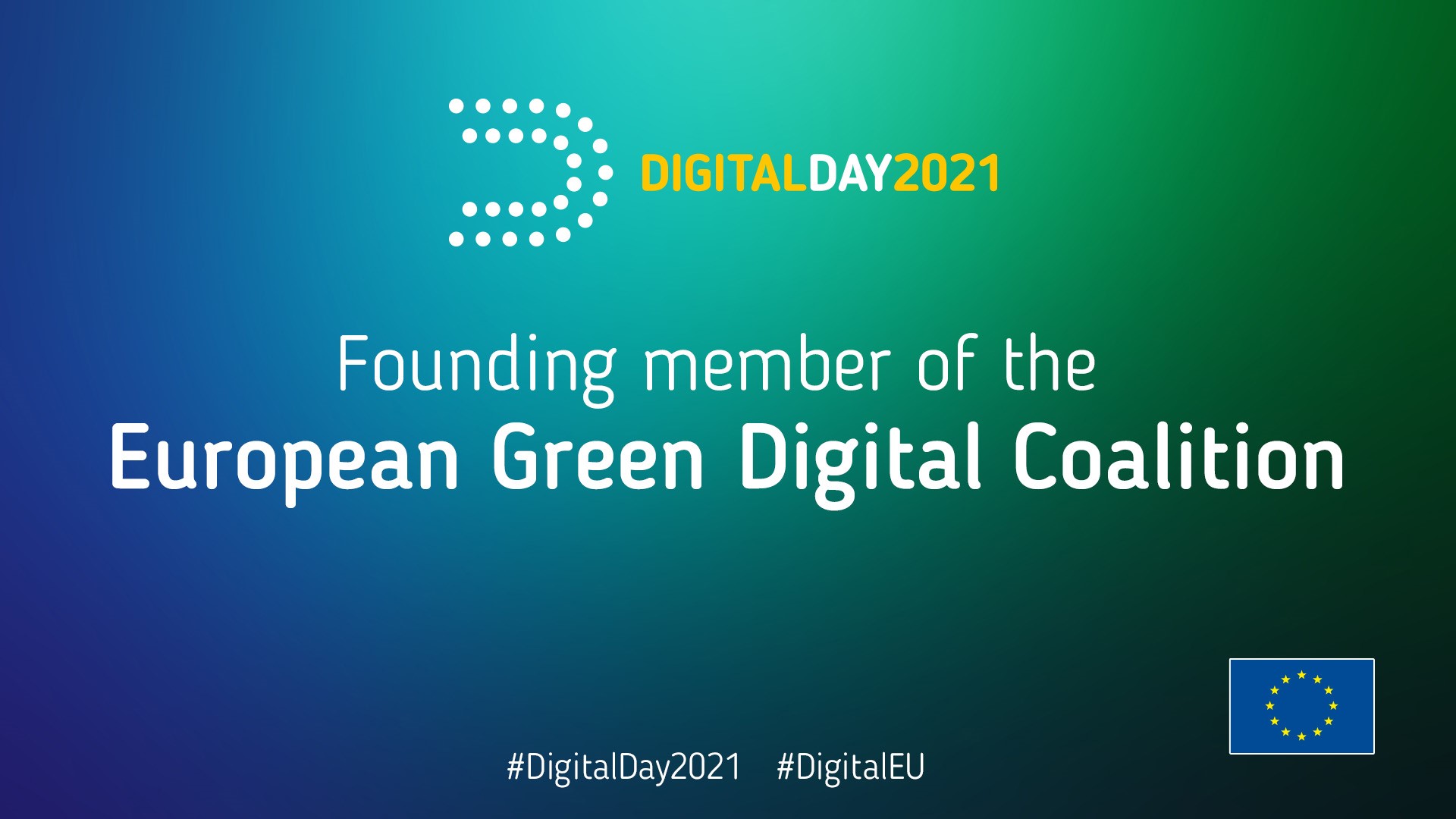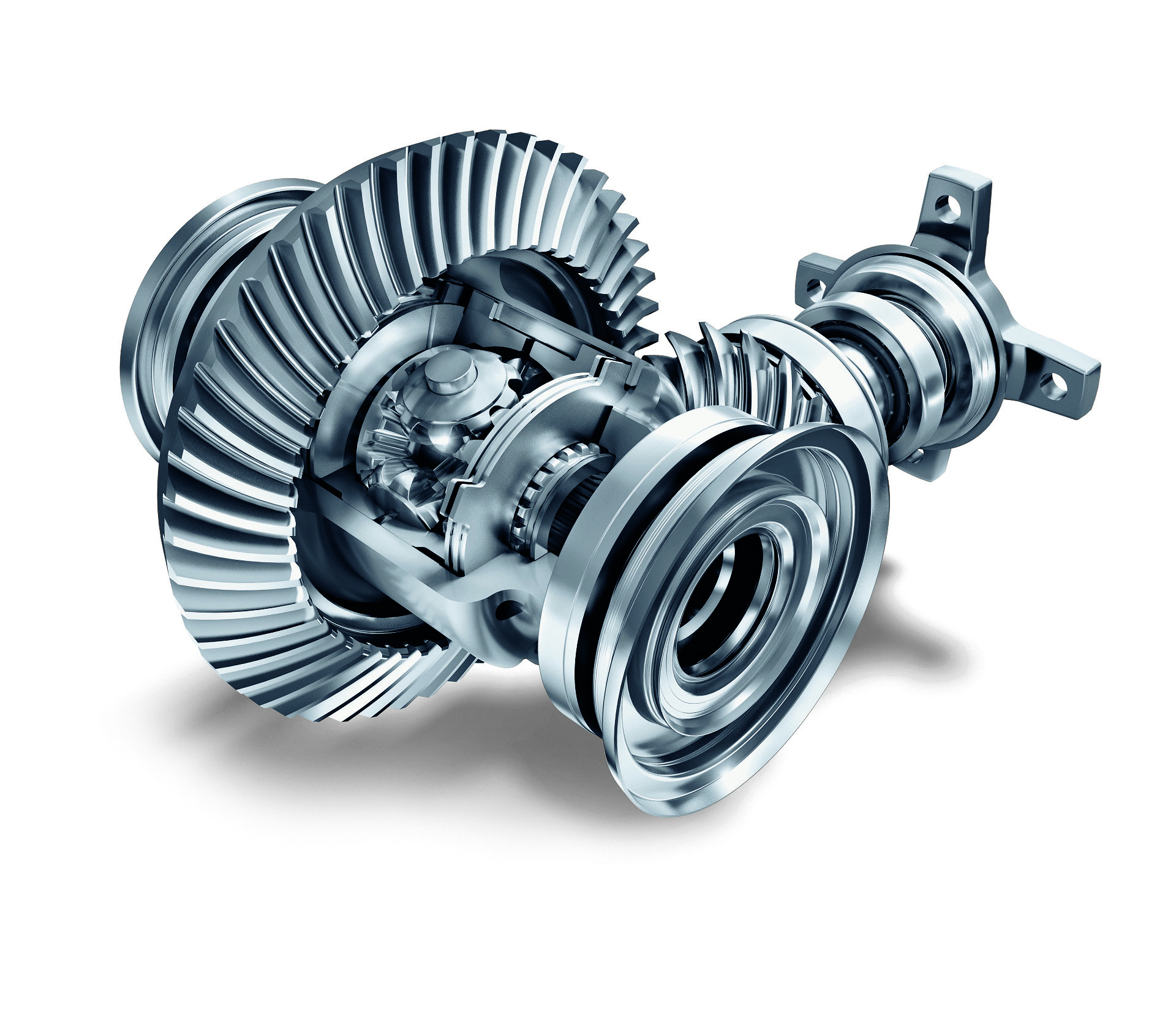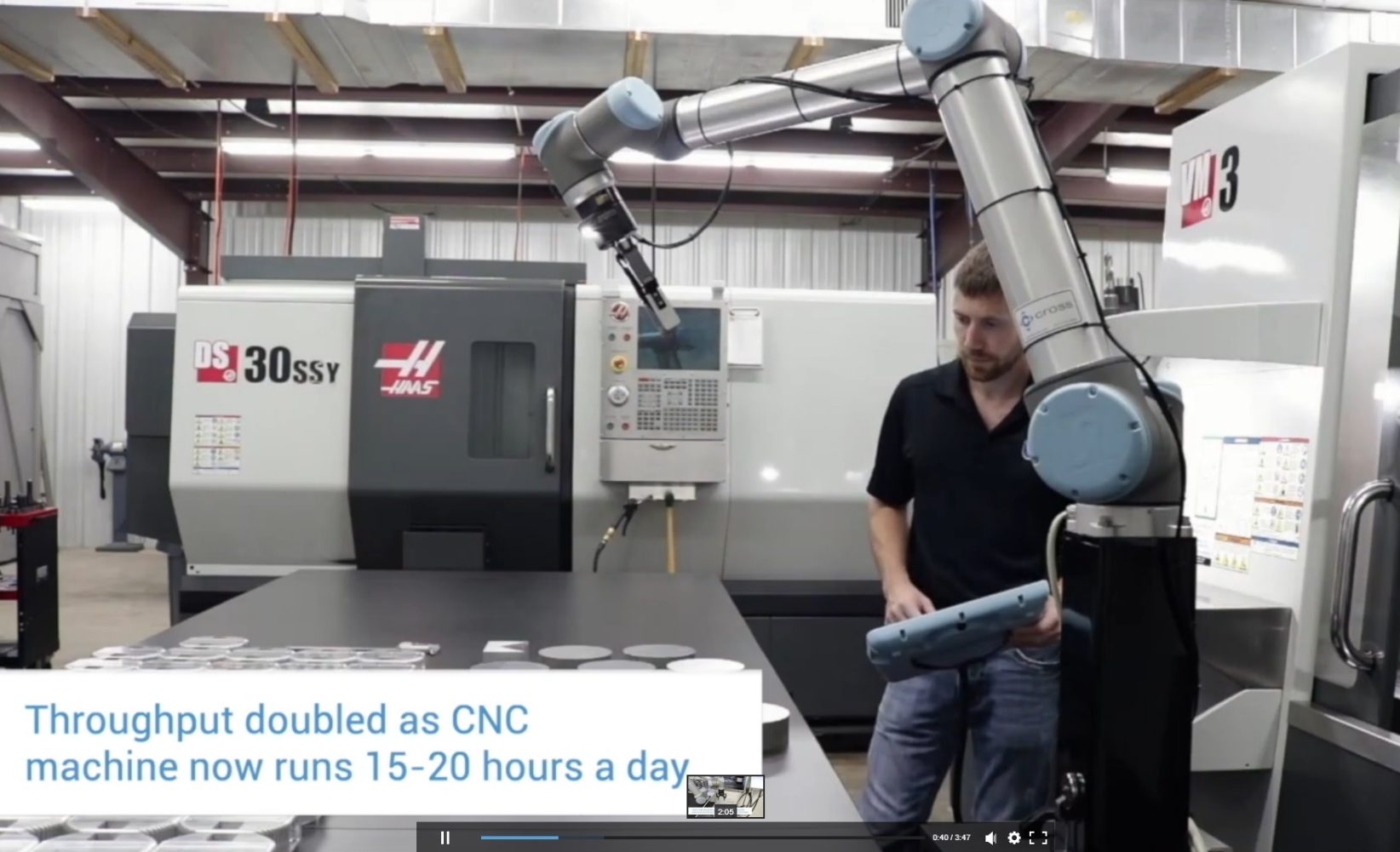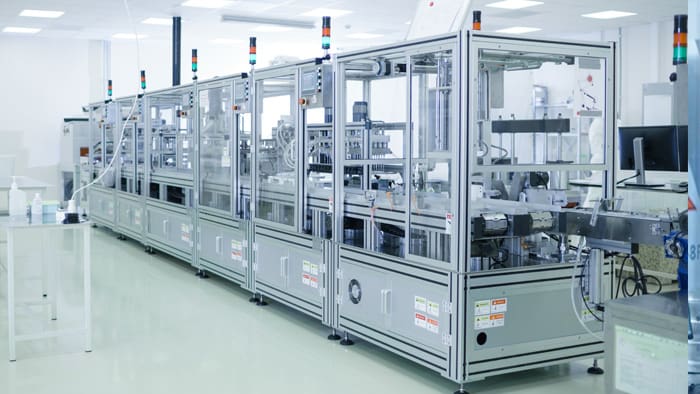HOW BLOCKCHAIN CAN TRANSFORM MANUFACTURING

BLOCKCHAIN IN MANUFACTURING
HOW BLOCKCHAIN CAN TRANSFORM MANUFACTURING
Blockchain, the exciting new digital ledger technology that can be used to store and record transactions and enable smart contracts, has the potential to transform the process of manufacturing. The World Economic Forum counts Blockchain among the key emerging technologies alongside IOT (Internet of Things) and AI (Artificial Intelligence) that are enabling industrial revolution 4.0.
Blockchain has many potential applications in manufacturing, for example, it can be used by manufacturers to mitigate the risks of counterfeiting, ensure transparency and compliance across the parts supply chain, protect IP and help advance additive manufacturing. Tech companies such as IBM and Wipro have introduced several Blockchain-based offerings for manufacturers. Wipro’s Blockchain offerings for manufacturers include applications such as anti-counterfeiting, airworthiness certificate tracking, supply chain visibility and 3D printing. IBM has proposed the application of Blockchain in the production parts approval process (PPAP).
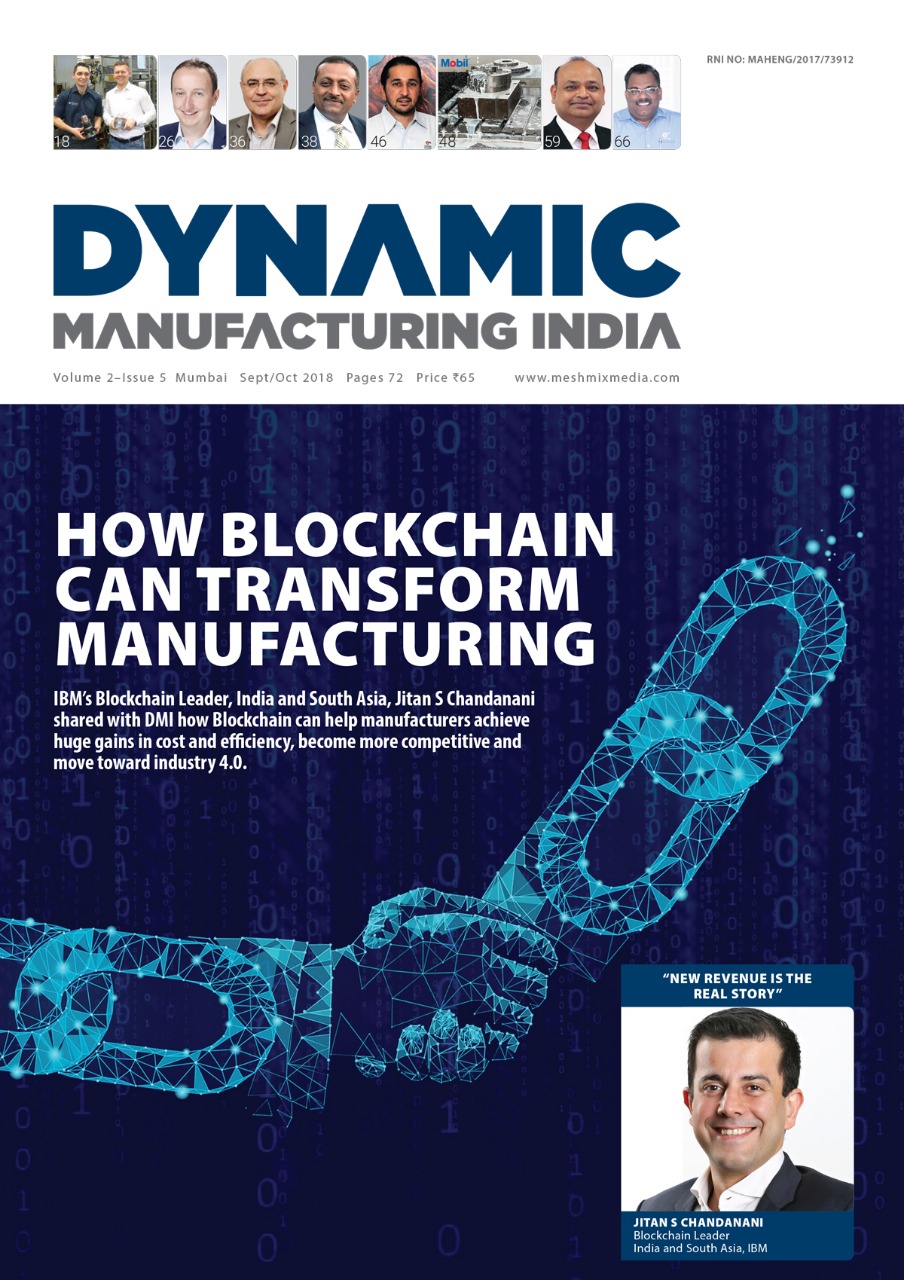
“New revenue is the real story”
Can you enumerate the different areas where Blockchain can be used in the manufacturing industry?
Though most of the talk about Blockchain seems to revolve around BFSI (Banking, Financial Services and Insurance), I would say that in the coming years you would see the use of Blockchain more in the manufacturing space than in any other. That is because of several reasons – manufacturing is one of the most expansive sectors and certain processes are challenging irrespective of what one is manufacturing. Let’s take the process of procurement which is common to all the manufacturers. When we at IBM started looking at Blockchain use cases for manufacturing, everybody [in manufacturing] told us right at the outset that procurement is a big pain area, mostly because it involves a lot of documentation that deals with information on raw materials, suppliers, logistics, agree-ments, price changes and others.
To give you an example of a typical procurement process, say, a manufacturer and a supplier agree on a master contract which specifies, among other things, certain prices for certain products. Based on the master contract, the manufacturer issues a purchase order, and the supplier starts to prepare for the delivery of goods, following which some invoices are generated that get into accounts payable and some invoices may go into dispute reconciliation. The goods reach the manufacturer so warehouse management also comes into play. There are about 10 different modules into which we group these processes constituting procurement – each module is a Blockchain in this space.
Let’s look at how we use Blockchain for these modules. Consider the process of Contract Management. Say, an automaker is working with 100 different vendors that supply different parts. With each supplier, the automaker needs to have a master agreement that determines the prices and the quality of performance in terms of delivery and other parameters. When the goods come in, the automaker needs to make sure that those goods meet all the determined quality criteria. What’s more, the automaker gets, say, 5 percent discount for ordering 200 and 10 percent discount for ordering 500. Further, when the parts are ordered, 10 of them turn out to be defective. So you have the master contracts (that define the impact of these events on the invoice) created into smart contracts of the Blockchain, and then apply that to the performance systems or invoicing systems, where these invoices get auto updated – with the supplier having the same view as the automaker. The entire purchase-order-to-accounts-payable cycle is an example of the application of Blockchain in classic supply change finance, where a use case is already going on.
The other application is in the management of suppliers’ performance. This is where we are using Blockchain with IOT. Say, a manufacturer has four plants which make plastic pipes. With the same amount of inputs, the four locations deliver different performance outcomes. With IOT and Blockchain the manufacturer can trace the reasons [for underperformance] to the source and manage the suppliers’ performance at these four locations. This is actually been done by the oil exploration companies. If an oil exploration company has one site in Pacific Ocean and another one in Indian Ocean, the performance of each depends on a number of factors include the quality of the machinery that the contractors are using at a particular site. The oil exploration can use Blockchain with IOT to manage performance across its sites.
Another great use case could be the application of Blockchain for GST payment. The way GST technically works is, say, a manufacturer and supplier submit their respective invoices on the 10th of the month; and submit the reconciled report on the 20th. If they were in a Blockchain right from the contract to the purchase order to settlement to the creation of the invoice, they would directly generate the pre-reconciled invoices. As a result they need not break any working capital to pay GST.
Today, the procure-to-pay process is inherent to manufacturing, which means that Blockchain use cases are applicable to every single manufacturing organization.
What are the major gains in terms of time, cost and efficiency that have you seen across these projects?
The accounts payable use case that we did brought out an estimated 30% productivity improvement. Now this was just in terms of the paperwork that went away in the first phase, which involved only a fixed set of suppliers, and not all of the suppliers. The biggest gain was the reduction in invalid deductions and disputes – the gain was to the tune of 60 percent! When we at IBM started to use Blockchain for our vendor management, I think the amount that we had in invoice payment disputes on any given date was about $100 million and the average time to solve these disputes was 21 to 40 days. The use of Blockchain brought down the amount to under $10 million and the dispute time is under 5 days.
Blockchain users can expect about 30 – 40 percent gains in cost efficiencies [in procure-to-pay] and as you scale up with the inclusion of more vendors and suppliers, the efficiency gains also go up. But the most important benefit, that I want to highlight, is the gain in revenue. Think of me as a supplier – if I can get my invoices resolved faster and not have my finance stuck for, say, 30 or 60 days, just the fact that I get my working capital faster may result in an extra production cycle for me and that means more business for me. That’s the true gain which the new system provides. Even though one can enjoy the competitive advantage temporarily [since everyone else will catch up with the adoption of Blockchain], new revenue means new markets and I think that’s the big picture and the real story when we talk about the benefits of Blockchain.
What are the typical business areas where Blockchain is being adopted?
In India, the three typical areas are travel logistics, accounts payable, and auto-components sourcing. In terms of use cases, globally, the biggest ones are Walmart and Maersk. We are working with Walmart on a food safety Blockchain solution where we are tracking the quality of the food throughout the farm-to-store supply chain. Maersk (the global shipping giant) and IBM have formed a joint venture (TradeLens) to improve the efficiency and security of global trade.
What are the limitations and risks that you foresee in the deployment and application of Blockchain in manufacturing? How do you make sure that the Blockchain platform is secure – I read about the hacking of DAO (Decentralized Autonomous Organization), an Ethereum Blockchain-based venture capital fund that was hacked by a user and lot of money was withdrawn [later restored by the community]. Then there is this inherent flaw called the 51-percent attack where a hacker can take control of a Blockchain if he/she wrests control of more than 50 percent of the network’s mining hashrate or computing power. How do you address such issues?
Let’s look at the hacking issue first. My favorite analogy to explain this issue is Gmail. As you know, Gmail is a messaging service which works on the internet. Now Gmail follows a protocol; if I want to send you an email on Gmail, my protocol is that I need a username and password and you need to have a Gmail address. Once that protocol is followed, then messages are exchanged. In the same way, a Bitcoin is a crypto-currency [as Gmail is a messaging service] that follows a certain protocol and works on Blockchain [as Internet is a platform]. Now what got hacked in DAO’s case was this protocol [not the Blockchain itself]. In addition, the Blockchains that we are talking about for their applications in the industry are private, permission-based Blockchains which work differently [as opposed to a public Blockchain such as DAO]. In private Blockchains, the network controls the access to the Blockchain – participants have to go through restrictive application to access Blockchain. Secondly, the cryptography and the hashing algorithms are all state-of-the-art – you really need a very powerful, quantum-computing type of supercomputer to crack these algorithms, and even that may take one 10 years or so.
As for the 51-percent attack, it is virtually impossible to launch a 51 percent attack in an enterprise-level Blockchain. For example, say an auto industry Blockchain has a thousand vendors, which are small to mid-size organizations. The idea that more than 500 of these companies will collude to launch a 51-percent attack is a far-fetched idea, particularly for a private, permission-based Blockchain.
Which industry sector can gain the most from the adoption of Blockchain?
In my view, it would be a sector like pharmaceutical which is constantly facing the issue of counterfeit products and also has a host of compliance requirements. Blockchain can help the pharma companies track all the information and make sure that the drug cannot be counterfeited. But I hasten to add that, even though pharmaceutical could be the biggest beneficiary, it could be a late adopter because of the presence of so much regulation globally. The second sector that would benefit would be auto, especially as you can combine Blockchain with IOT to improve the efficiency and transparency of the auto-component supply chain. With the fast-growing segment of connected cars and autonomous cars, you can bring all the emerging technologies together to leverage different markets and ideas. To me, pharma and auto
would benefit the most from the adoption of Blockchain.
When I speak with the chiefs of supply chain and manufacturing, I see that they want to know more about how Blockchain can help their processes, but they say that their IT people haven’t yet figured it out. Let me ask you two questions on their behalf: what is the IT infrastructure that I should have in place to implement Blockchain, and how can IBM help me identify areas that could benefit the most with Blockchain?
My answer is that if you have internet connectivity and can use a smartphone or a feature phone than that’s the basic level that I’d require for a participant to join Blockchain. That’s the basic level, going up all the way to the most sophisticated ERPs – all of them can be integrated with Blockchain. To the question of how IBM can help, I’d say that you can call IBM to do a business case [analysis] with you; don’t call us for selling technology. Today if you tell that you have a SAP system that’s currently linked to, say, a thousand suppliers and your dispute rate is 0.1 percent, that would be a perfect Blockchain use case but you can’t derive any major efficiency gain because your disputes are minimal and you are doing a fantastic job already. However, if your disputes are higher, and we will see that Blockchain the best answer over and above all the other available technologies that can help you, we will recommend Blockchain. It is not an off-the-shelf product; it has to be applied to a particular use case and then one has to build an ecosystem around it, which is why its adoption can take a longer time. If I can crack that business case with the clients and we both come out of the discussion that yes this is going to help you save money or make money than we start talking about the technology. So it’s a business discussion, not a technology discussion.
How can Blockchain be combined with other emerging technologies like IOT and additive manufacturing to help in the advancement of industry 4.0?
IOT has been around for quite some time and we have seen a lot of results. Let’s take the gadgets in a house; the phone could be Samsung, the T.V could be Sony, the fridge could be LG and your microwave could be Philips. Samsung has a fantastic IOT platform but how can the house-owner merge information across the devices for a common purpose? Samsung, Philips, and LG will not share that information. Blockchain can be used as an information-sharing technology ensuring that there is restricted sharing and the information is accurate. Therefore Blockchain works very well with IOT when you have multiple platforms and participants. As importantly, when we talk about AI (Artificial Intelligence) and data analytics, the challenge is that these are all GIGO (Garbage In Garbage Out) technologies – you put bad data in, you get bad outcomes. Blockchain, with its ability to maintain the accuracy and validity of information, can help integrate all these technologies and maximize their benefits. In a manufacturing ecosystem, it will also give you visibility across a number of verticals. Consider for example an automaker that gives an order to a tyre manufacturer. Say the tyre manufacturer couldn’t deliver because the tyre-tubes got delayed. Now with Blockchain, the automaker can run better analytics for the entire tyre supply chain, track the inefficiencies and take informed decisions accordingly.
www.ibm.com


